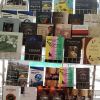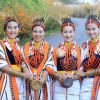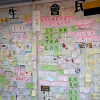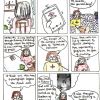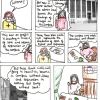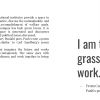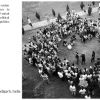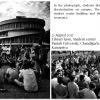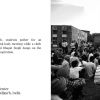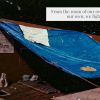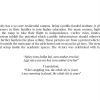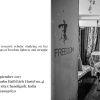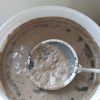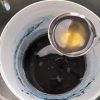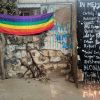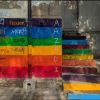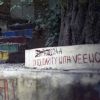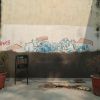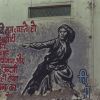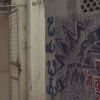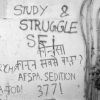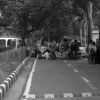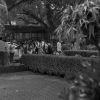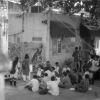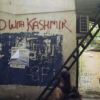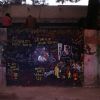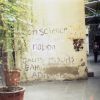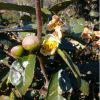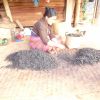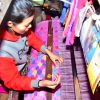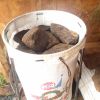The search found 237 results in 0.033 seconds.
Search results
Naga identity has been, in a major way, shaped by orality and Naga history. Its culture and literature have been handed down via the spoken word over generations and is still revered as a custodian of its customs, beliefs and way of life. In the present times however, with orality fast disappearing, there is an urgent need to preserve those narratives in print so that the younger generations too have access to their roots, and that tradition can meet modernity in some manner.
Despite “customary” restrictions, Naga women have successfully paved their way in various fields ranging from politics to literature. In the field of music, we have the Tetseo Sisters, a quartet of four siblings (Alunë or Lulu, Kuvelü or Kuku, Mütsevelü or Mercy and Azi Tetseo) who, through their music and storytelling, celebrate the beauty of the hills and valleys of their native place. Belonging to the Chakhesang tribe and based out of Kohima, the band was formed in 1994 and they strive to preserve the tradition of "Li", which in the Chokri Naga language means "folk songs".
This is a photograph taken from one of the university campus's democracy wall. These are walls on most campuses in Hong Kong where students (or anyone) can post stickers and messages to support freedom of speech, academia and so on. During the past years Freedom of speech and academia has become increasingly restricted and walls like these have been dissapearing. If we return now to many of these walls they will be empty and even if they are available certain messages are no longer allowed to be written.
Remembering the Wall Arts of Ambedkar University Delhi
"I am the grass, let me work."
- From Carl Sandburg’s and Pash’s poem Grass (Ghah)
Panjab University has a 550 acre residential campus. Being a public funded institute, it gives a chance to many first learners in their families to join higher education. For many women, higher educational institutes are the ramp to take their flight to independence. Curfew rules, limited housing and institutional sexism inhibit the potential which a public infrastructure should otherwise nourish and produce. This further hardens the glass ceiling. These pictures are from a protest which started on 29th of october 2018 outside the main gate of the girls hostel and went on for 48 days.
With excitement I have received a Indigo material package, shipped from Taiwan. The package is prepared by one of the HAB Principal Investigators, Prof. Min-Chin Chiang, whose project is focus on the revitalization of indigo dyeing, especially the production process of/with natural dye.
Here is my 8 days trial and error of Indigo Dyeing Kit
His-Chuan, Liu
1ST Day:
From the Aazadi (Freedom) wall that is a giant pride flag emblazoned with the word freedom in ten of the many, many languages spoken by the people of India, to the Memorial Wall to commemorate and mourn some of the many lives lost to transphobic violence in our country - the queer community turned to the walls of AUD to turn collective joys and sorrows, love as well as violence, into art. October 2019 marked the arrival of AUD's campaign of censorship to these walls that long held the voices of dissenting, marginalized students.
I initiated this project as an attempt to document what I saw as a thriving culture of dissent and student politics through the graffitied walls of the campus.
Far from sustaining a space for engaged, critical scholarship in service of social justice, the university administration has a history of casteism and has left no stone unturned in fostering Brahminical and Hindu-Supremacist ideals in the university. From scuttling affirmative action policies for SC/ST students to coercing sanitation workers to engage in manual scavenging (a caste atrocity and grave human rights violation) to suppressing any criticism of the Indian State, AUD has been an insult to the memory and vision of Babasaheb Ambedkar.
I initiated this project as an attempt to document what I saw as a thriving culture of dissent and student politics through the graffitied walls of the campus.
Ambedkar University is no longer the fairly progressive university space that stood out amongst its counterparts across the country it used to be -- as a space for critical thought and oriented towards social justice. This was because its community - working class, dalit, adivasi, bahujan, queer, disabled, women students, faculty and staff, had fought hard to make it so. As a university that charges an exorbitant fee for a public institution and barely has anti-discrimination policies for marginalized communities, for AUD to lay claim on Ambedkar's radical legacy was already a stretch.
In the process of breeding the indigo vat, we noticed a fermented smell unique to indigo, and experienced the process of indigo becoming a dye through fermentation. We also noted the color cange from green to blue in the oxidation process. We used shibori resist dye techniques for the dyeing process. We applied pressure to the cloth using boards or strings and create a resist. We thought it would be ideal to show contrast between the indigo and the white of the fabric to accentuate the beauty of the blue.
“Arts and Crafts Renaissance” as conceptual approach in designing an indigo dyeing curriculum
Tea blossoms that emerge from the tea tree are left intact during the harvest. These blossoms are pollinated and produce fruits that ripen around Thadingyut and Tazaungmone (around October and November). The most mature fruits fall to the ground and the fruits that remain are picked for the seeds. The capsule-like seeds are egg-shaped and turn slightly brown when ripe. Inside the capsule is 2 or 3 seed pods which contain 2 or 3 seeds.
Dried tea leaf is mostly manufactured in March and April when enough sunshine is available. At that time, the leaves are saturated with oil. It is the best time to make dried tea leaf. It is known as Moe-ma-hmi, Shwe-Phi dried tea leaf. During the months of March and April, dried tea leaves become dry in a day. Then they are sorted out to be marketable. There are two kinds of dried tea leaf namely, hard dried tea leaf and soft dried tea leaf. The soft dried tea leaf is not curled up fully and leaf is thick. The hard dried tea leaf is fully curled up and the leaf is thin.
A weaving workshop is located in Mandalay, Myanmar. Most works are migrants from Shwebo Township and neighbouring places which are located in Sagaing Region near Mandalay. The owner provides lodging and meals to each worker at the workshop.
The innovative designs of the Kachin traditional lower garment since ancient times (Hta-main in Myanmar) are created by the owner and the designer collectively based on the market demands. All products are sent to various local shops in Yangon.
These photos are the innovative designs of the Kachin traditional lower garment (Hta-main in Myanmar) by creation of the owner and the designer collectively in terms of market demands. The first photo combines five lower garments through folded styles and it shows how to evolve and innovate the designs since ancient times. When the Kachin lower garment was created, the width of the line was only three inches and it was worn in behind the waist (the first one, green colour of the Figure (1)). However, nowadays the line is about six inches (the third one of the Figure (1)).
In the past, fermented tea leaf used to be packed tightly in bamboo containers. It was put in the containers layer by layer. It was kept for at least six months. Nowadays, fermented tea leaf is packed in Penang sacks one layer after another. Then they are well pressed by big pieces of stone. They are left like this for a long time. Then they are ready to be sold. While they are kept in sacks and pressed, the superfluous juices drain outside. It can make the place dirty. However, it cannot affect the quality of the fermented tea leaf.
Pages

